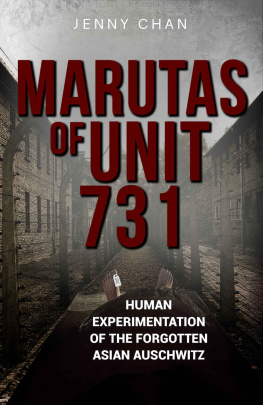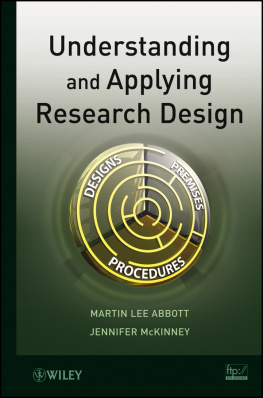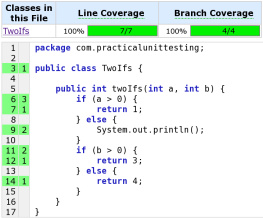Unit 731 Coverup
The Operation Paperclip of the East
Haddie Beckham
Merja Pyykknen
Pacific Atrocities Education
Unit 731 Coverup
The Operation Paperclip of the East
Written by
Haddie Beckham
and Merja Pyykknen
Editor
Barbara Halperin
Published by Pacific Atrocities Education
All rights reserved. Printed in the United States of America. No part of this book may be reproduced in any manner whatsoever without written permission except in the case of brief quotations embodied in critical articles and reviews. For information, address Pacific Atrocities Education, 730 Commercial Street, San Francisco, CA 94108.
Paperback ISBN: 978-1-947766-35-8
E-book ISBN: 978-1-947766-33-4
Table of Contents
Introduction
Concentration camps, Nazis, Heinrich Himmler and many more concepts can be found when discussing the topic of World War II. The vivid images of the Jewish people, found starved when freed from the concentration camps of Nazi Germany, have provoked worldwide compassion, guilt and misery for succeeding generations. After post-war peace was established, Nazi Germanys brutal acts conducted on innocent civilians during the war were brought to light and discussed, leading to an examination of the violations of human rights and questions regarding the morality and justification of war. Overall, discussions about those painful experiences helped Germany to deal with its past and guilt, though rarely associating them with the post-war generations.
However, similar brutalities carried out in WWII Japan remained mostly silent in research, education, and culture once the war ended and continue to be absent from the mainstream channels of information. Movies, television series, books and magazines are familiar with the topic of Nazi Germany, but the general population has not been educated about Japans heinous wartime atrocities. It included factories where various diseases were tested on human captives, as well as field tests on Soviet Union and Chinese civilians. Japan aspired to develop effective tools for biological warfare, which was prohibited after WWI. Using human captives, the medically trained Japanese scientists gathered data on progression of the diseases until the human guinea pigs died.
Keeping the information secret, the United States secured this data with a price tag, i.e., not prosecuting those responsible for the operations, such as Emperor Hirohito. The Soviet Union later joined in hiding information, since the secrets of successful biological warfare provided both superpowers massive new weapons of destruction. This book will provide the reader a closer look into this hidden side of WWII, through original primary sources from the United States occupation of Japan and Soviet Union materials brought to light at trials. What was then determined as top secret is now more available, and this research will help us construct a better picture of hidden information, what was decided, who participated in the life-changing agreements, how decisions were justified, and what remained hidden from the public?
Japan Before World War Two
The Rise of Japanese Militarist Politics
By the 1920s, nationalism and militaristic politics had soared to an all-time high in Japan. Beginning with the Russo-Japanese war (1904-1905), Japan had adopted the moniker The Empire of Japan and began to conduct itself as an imperialist colonial empire in East Asia. Faced with economic hardships and a lack of sufficient materials during the 1920s and 1930s, Japan needed to import raw materials such as iron, rubber, and oil to maintain strong economic growth. The Japanese felt that acquiring resource-rich territories would establish economic self-sufficiency and independence, and Japan, as an island nation, had limited resources.
By the early 1920s, imperialist circles in Japan already considered Soviet Russia the most dangerous and malicious enemy and began plans to prevent a communist revolution east of the Urals. As time passed, these plans became less defensive and more aggressive.
Since 1923, Japan had been preparing for an inevitable war against the Soviet Union. During 1923, in military-government meetings, the government worked on Japans foreign policy approaches which included two directions for military expansion: south into China and north into the USSR. Also of note, it was during this time that Japan determined its two main opponents: the USA and the USSR. A key difference between the two opponents is that while the Japanese government saw war with the US as a theoretical possibility, war with the USSR seemed more visible each day.
The East Conference & Invasion of Manchuria
On June 27, 1927, leaders of Japans ministries of Foreign Affairs, Military, and Navy held the East Conference, in which leaders discussed future plans regarding China and the Far East. Most importantly, the discussion focused not only on Japans plans for economic expansion into China but also their goal to crush the fight for the liberation of the Chinese people, which had sparked an anti-imperialist revolution between 1925 and 1927. The Japanese sought to create a stable zone free of anti-imperialist and pro-communist sentiments. Resulting from the East Conference, on July 7, the document The Political Program in Relation to China was published, which included China, Mongolia, and Manchuria all as Japans subjects of peculiar concern.
The Japanese takeover of Manchuria began on September 18, 1931 with the Mukden Incident. On that day, the incident led to a complete takeover of the entire country. By the middle of 1932, the entire country was under the control of the Japanese Kwantung Army. According to Historian Sheldon Harris, the Manchurian government did little to resist or stop the takeover. From 1932 to 1934, Japan tried to create the facade of an independent state to foster legitimacy. A puppet government was set up, led by Emperor Henry Puyi, who was enthroned in 1932. Under the illusion of independence, all Manchurian officials and Puyi were under constant surveillance. Every Chinese official had a Japanese advisor, who would instruct them regarding choices and decisions. Japan did not seize Manchuria for its vast resources alone; according to the former War Minister Jiro Minami, the occupation of Manchuria allowed the army to build a launchpad that would allow military attacks against both China and the USSR. By turning Manchuria into a colony and exploiting its resources to support the Empire, Japan prepared for military expeditions across Asia.
Following the Japanese invasion of Manchuria and its annexation in 1931, Japanese and Soviet troops for the first time faced one another along a border thousands of kilometers long. The Soviet response to the Mukden incident was minimal, but Soviet Premier Joseph Stalin on March 4, 1932 warned Japan that we neither want even a clod of foreign territory nor will we yield even a single inch of our land.
To protect the Japanese Manchurian puppet state and to maintain influence, the Imperial Japanese Army adopted a policy of halting any Soviet advance along the border. In 1935 the USSR sold its part of the North Manchurian Railway to Manchukuo. This railway had been the major source of Soviet influence in Manchuria since 1924, and with the removal of this influence, Japanese and Soviet forces faced each other in the frontier. Since many sections of the border were not clearly defined, throughout the 1930s border disputes and skirmishes were common. Despite the skirmishes, Japan and the USSR did not enter into war against each other until the Soviet Union declared war against Japan and invaded Manchuria on August 9, 1945.
A key reason why Japan never attacked the USSR is because Soviet troops in the Far East always outnumbered the Japanese in Manchuria. The Japanese Army General Staff made yearly estimates concentrating on whose army had the most potential. Between 1931 and 1945 both the Soviet and Japanese increased their strength in the Far East, but the Soviet Army was always estimated to outnumber the Japanese. Therefore, Japanese war plans against the USSR involved sabotage, such as damaging the Trans-Siberian Railway, which was crucial to transportation, destroying petroleum and war stockpiles. Additionally, the Japanese Army recognized that even the defeat of the Soviet forces in the far east did not necessarily mean a defeat of the Soviet Army as a whole. Therefore, Japans strategy relied on at least two simultaneous attacks, one from the Western Front in Europe and one from the Eastern in Asia. In order to create instruments capable of mass sabotage and destruction, Japan began to invest in chemical and bacteriological weapons (CW and BW) programs.
Next page







